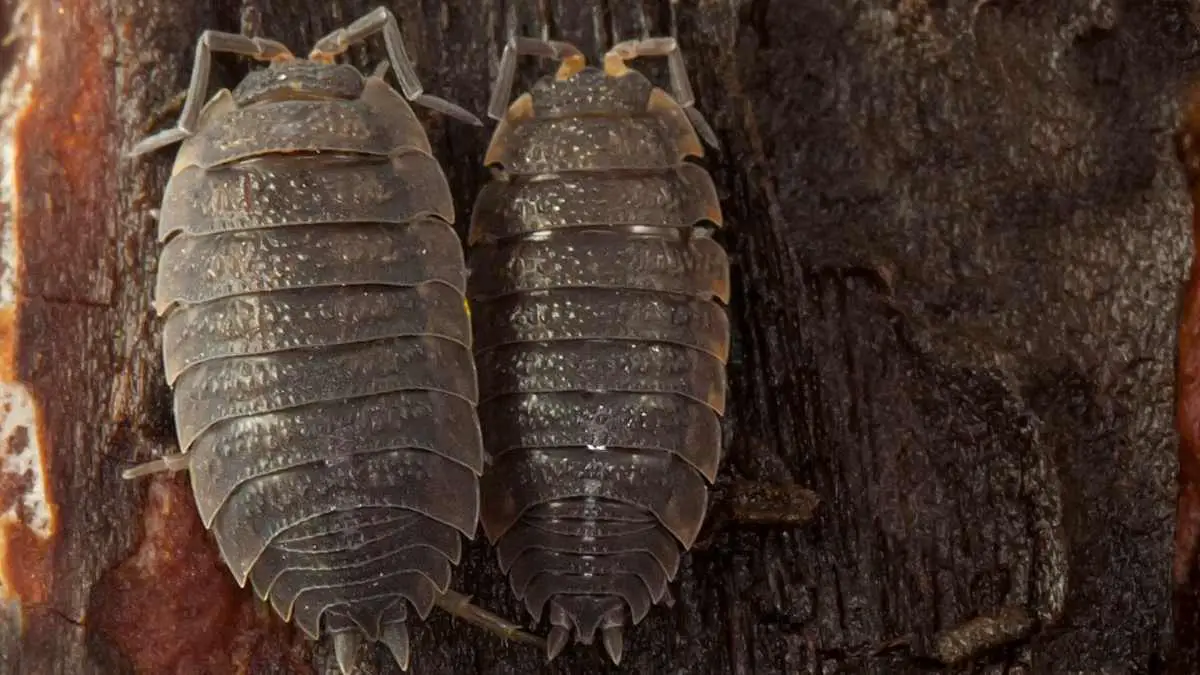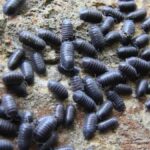Woodlice is an arthropod belonging to the isopod’s order. There are over 10,000 known species, most of which reside in the oceans. Woodlice are crustaceans and happen to be closely linked to crabs, lobsters, and shrimp, instead of millipedes and insects. They can either be blackish, brownish, or greyish—dull colored.
Unlike the case with other crustaceans, the woodlice don’t have a shell. But an exoskeleton made up of plates helps to protect their bodies. The thorax part of the body comes with 7 pairs of legs, also known as pereiopods.
7 Common Questions About Woodlice
The following is a look at the most common questions about woodlice. Answers to these questions can help you better understand woodlice, including what they eat, whether they bite, and whether they have eyes.
What Do Woodlice Eat?
As mentioned earlier, the woodlouse is a crustacean, not an insect, as many assume. It’s found in damp and dark jungles and forests around the world. It feeds on the decaying plant matter and plants on forest floors. This means that it plays an essential role in the CO2 cycle.
Woodlice are herbivorous animals. As such, they only feed on organic plant matter. It’s an animal that rarely eats live plants, preferring to feast on decaying leaves, rotting fruits, and wood falling from the trees above it.
Do Woodlice Bite?
There’re two main types of woodlice: sowbugs and pillbugs. They can be grey or black and are usually measured between 12mm and 15mm in length.
This tiny insect is in no way dangerous to human beings.
It does not bite, sting, or transmit any diseases. Additionally, it does not cause any material damage.
Another plus is that the woodlice are not attracted to human food. However, they do happen to be a favorite for many other animals around the world. Humans in some regions of the world also eat them.
Can Woodlice Swim?
No, woodlice cannot swim. Instead, they live in a terrestrial environment, which means they breathe air through their trachea-like lungs.
These animals need moisture as they lose a lot of water through their cuticles and through excretion as well.
It’s, therefore, common to find them in dark and damp areas, e.g., under logs and darks.
There is, however, a species known as the Hemilepistus reaumuri that is particularly fond of the desert and is to be found in some of the driest habitats in existence around the globe.
Do Woodlice Lay Eggs?
Of all the crustacean species known to man, the woodlice are the only crustacean known to inhabit inland instead of living in watery habitats. It’s believed that there are over 3,000 woodlice species in existence today.
Do woodlice lay eggs? Yes, they do!
The female woodlice generally lay a total of twenty-four eggs, which she then hides in a brood pouch. It only takes a few days for the eggs to hatch.
It takes a few months for the babies to develop fully, forcing the mother to stay close by until they are adults.
Do Woodlice Eat Wood?
Woodlice mainly feed on wood and other decomposing plant materials. Scientists believe that these animals are some of the best recyclers in the insect world.
As they feed on wood, it is best to stop woodlice from getting into your house in the first place!
The woodlice prefer damp environments, which is where they thrive the best. Homeowners with compost bins should consider finding some woodlice in their gardens.
The woodlice will do a marvelous job on your compost heap. This may also prevent them from causing problems in other parts of your garden.
But it would help if you didn’t have to worry, as it’s rare for woodlice to eat freshly planted flowers.
Do Woodlice Eat Plants
While woodlice mainly prefer to feed on decaying plant material, they have also been known to cause damage to carrots, seedlings, beans, peas, and bedding plants.
Additionally, they can also damage your soft tissues such as tomatoes, strawberry plants, and cucumber plants.
Often, they will prefer to enlarge wounds that would have already been created by wireworms, slugs, and other plant pests in bulbs and potatoes.
The mouthparts in woodlice are not strong enough to deal with tubers and bulbs that have not sustained any damage.
Do Woodlice Have Eyes?
Its senses are mainly centered around its simple eyes and jointed antennae. The eyes have about twenty-five individual ocelli, enough for the woodlice to detect large moving objects, shade, and light.
However, this isn’t enough for the woodlice to form images that have a high-resolution degree.
The fact that their eyes are sensitive to sunshine is what forces the woodlice to thrive in areas that are damp and dark.
Conclusion
Woodlice are closely related to seaside crabs and often stay close to dark and damp areas.
Ideal locations include shady, damp gardens that offer lots of cover under:
- Plant materials
- Furniture
- Containers
- Mulch
The locations are suitable in that they are not easy to modify. This makes it easy for the woodlice population to increase within a short time.
If you are worried about damage to your garden, you shouldn’t be. Woodlice is, in fact, beneficial in increasing soil fertility and breaking down plants that are already dead.




How can I stop them entering my house, thank you.
Hi, I will write an article to help you put an end to woodlice entering your home. It’s a tricky one, given their size and ability to sneak into the smallest of gaps. The long and short of it is you need to seal up woodlice entry points. They are attracted to water leaks too, so check for leaks and fix them ASAP.